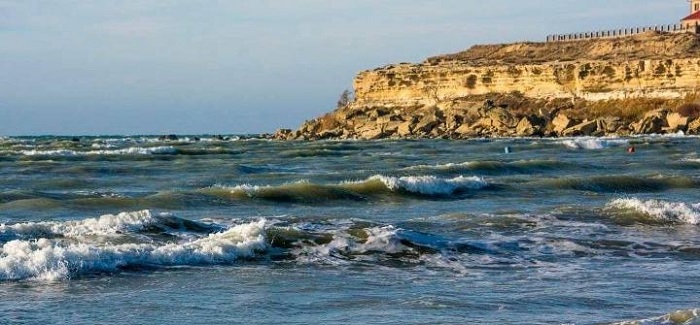nCa Report
The level of the Caspian Sea has been decreasing and it is a common problem for all of the littoral states. There are joint efforts to reverse the phenomenon.
The shallowing of the sea is more obvious in the sectors of Kazakhstan and Russia.
According to a report by Turan.az, published on 5 March 2024, since 2005, the level of the Caspian Sea has been decreasing by about 20 cm per year.
The gradual shallowing has been going on for the last 20 years and the situation is especially critical in the northern — Russian and Kazakh.
In October 2023, the All-Russian Research Institute for Civil Defense and Emergency Situations warned about the risk of incidents with ships in the Caspian Sea against the background of falling sea water.
State Duma deputy from Dagestan, member of the International Affairs Committee Sagidpasha Umahanov reports that since 2005, the water level in the Caspian Sea has fallen by one and a half meters. “This is a big problem for all landlocked countries. Azerbaijan, Kazakhstan, Iran, Russia, Turkmenistan will have to solve it together.”
80-85% of the water flows into the Caspian Sea from the Russian Volga River. Nine reservoirs have been built on it: Verkhnevolzhskoye reservoir; Ivankovskoye; Uglich reservoir; Rybinsk reservoir; Gorky reservoir; Cheboksary reservoir; Kuibyshev reservoir (one of the largest in the world); Saratov reservoir; Volgograd reservoir. These facilities were built in Soviet times to take water for agricultural purposes and definitely reduce the flow of water into the Caspian along the Volga. In recent years, the volume of drainage along the Volga has decreased by 25-30%. Therefore, the decrease in the level of the Caspian Sea is becoming more and more noticeable. The Kura River brings 7-8 cubic km of water to the Caspian Sea per year.
An immediate consequence of the shallowing of the Caspian is that the ships plying to and from the ports of Kazakhstan cannot navigate with full capacity because at some place the depth is just about 5 meters.
Lidiya Parkhomchik, chief expert at the Institute of World Economy and Politics, in a recent interview with Rail-news.kz spoke on this:
“Over the past few years, we have seen a decrease in sea level by almost a meter. This factor affects the operation of seaports along the entire northern coast. This problem makes adjustments to the further development of the tonnage of both the tanker and the dry cargo fleet of Kazakhstan.
“Now the maximum and acceptable capacity of oil tankers is no longer 12 thousand tons, but eight thousand tons. Even if we have tankers available that can carry volumes up to 12 thousand tons, we cannot load them to the maximum. Due to the shallowing of the berths, Aktau and Baku ports do not allow this additional loading.
“For example, the maximum occupancy of dry cargo ships could reach 6.5 thousand tons, but due to the need to maintain conditions for the maximum through draft, the load decreased to 4.4 thousand tons. We are losing the tonnage of ships that are idling.” /// nCa, 6 September 2024
